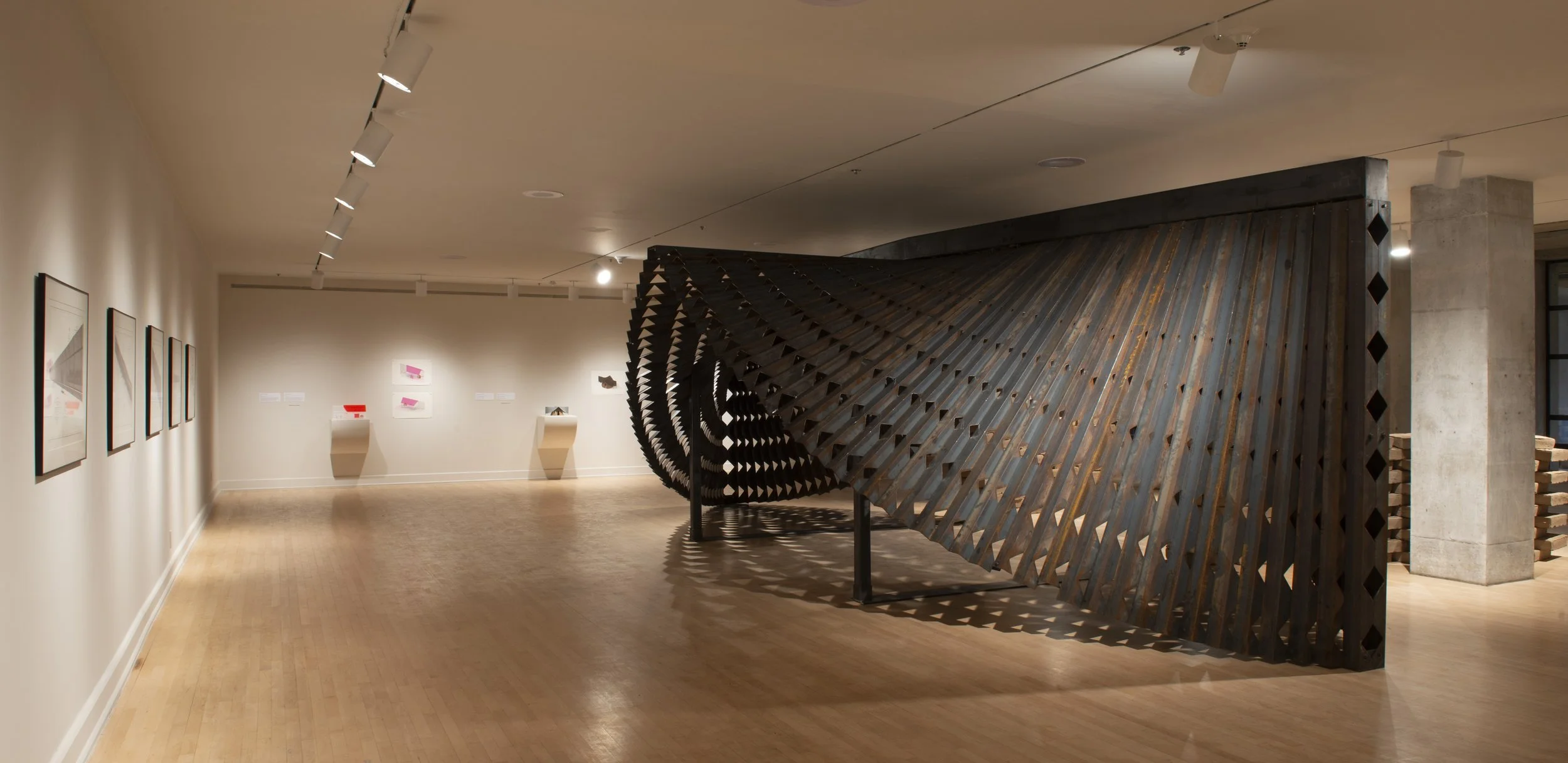House United/ Casa Unida
Between January 2017 and January 2021, the Trump administration built 458 miles of border wall, according to final figures compiled by U.S. Customs and Border Protection. The project cost up to $20 million per mile and consists mostly of 18- to 30-foot steel bollards anchored in concrete. Some 226 miles, nearly half of the total number of miles built, run along the border in Arizona. Hours after President Joseph Biden took office in January 2021, he signed an executive order to halt the wall construction. Today, tons of raw building materials lie abandoned and unused. Rael and San Fratello imagine new ways in which these custom pieces of waste material could be used to bring people together.
“House United/Casa Unida” consists of 172 pieces of steel that were originally destined for use in the wall that was to be constructed between the states of Arizona and Sonora. This steel, in particular, was notched to receive the wall at a 45-degree angle, then welded together and filled with concrete. Rather than its original intent, a structure of literal and metaphorical weight that is both a metaphor and material of violence and separation, “House United/Casa Unida” is instead a place of gathering and healing. The expression of this structure is converted to something reminiscent of a bird’s wing, soaring and liberating. The pavilion is grounded to the earth through walls made of adobe, the traditional building technique that has existed in the region for centuries. After its exhibition at the ASU Art Museum, the structure will serve as a model for a meeting house to be constructed at Casa de la Misericordia, a migrant shelter in Nogales, Sonora.
PROJECT DATE: 2022
PROJECT TEAM: Ronald Rael and Virginia San Fratello
STEEL FABRICATION: Falcon Designs
ENGINEERING: Wallace Design
PHOTOGRAPHY: Craig Smith





